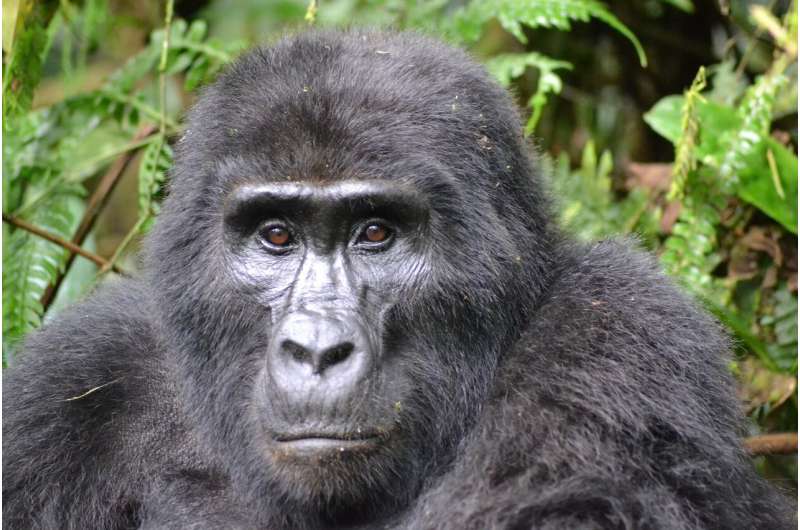Global mountain gorilla population grows to 1,063

Survey results released today from Bwindi Impenetrable National Park in Uganda, and the contiguous Sarambwe Nature Reserve in the Democratic Republic of Congo, have confirmed that the mountain gorilla population in the forest has grown to 459, providing further evidence that conservation efforts to protect the planet's greatest apes are working. This brings the global number of confirmed mountain gorillas to 1,063, when combined with results from the Virunga Massif survey conducted in 2015/16.
The survey was conducted by the Protected Area Authorities in Uganda and the Democratic Republic of Congo, involving more than 75 trained survey members under the transboundary framework of the Greater Virunga Transboundary Collaboration and supported by the International Gorilla Conservation Programme (IGCP), a coalition of Conservation International, Fauna & Flora International and WWF. The survey results were also carried out with the support of People's Postcode Lottery.
Last year, thanks to an increase in their numbers, the status of mountain gorillas was changed from Critically Endangered to Endangered by the IUCN, considered the global authority on the health of the world's plant and animal species. Today's survey results are further confirmation that the prospects for this incredible primate continue to improve following decades of tireless work from dedicated conservationists and communities.
"These survey results are undoubtedly good news, yet mountain gorillas remain threatened with extinction," said Matt Walpole, Senior Director, Conservation Programmes at Fauna & Flora International. "Fauna & Flora International has been working with our partners to protect mountain gorillas for more than 40 years and we are not complacent. We have to remain vigilant against threats and build on the success achieved to date by ensuring resources—including from tourism—are properly directed to mountain gorillas and local communities."
In May 2018 it was confirmed that the global wild population of mountain gorillas had topped 1,000.
Illegal activities continue
The latest survey results did not deliver uniformly good news; illegal activities in the Bwindi-Sarambwe ecosystem have not declined since 2011, despite significant enforcement and community engagement efforts. The teams destroyed 88 snares during the 2018 survey, roughly the same number as in 2011.
Mountain gorillas are not the only wildlife benefiting from focused conservation work across these two areas—the survey also recorded the largest number of elephant and chimpanzee detections ever for the Bwindi-Sarambwe ecosystem. The survey teams say that although this is "not definitively" an indicator of increasing trends "it does suggest that these species are not declining."
The conservationists who penned the report cautioned that the Bwindi-Sarambwe ecosystem is still vulnerable to human disturbance, listing its relatively small area, limited core interior, climate change, dependency of surrounding human community on park resources, and other human-wildlife conflicts as present threats to the gains achieved to date.
Provided by Fauna & Flora International



















